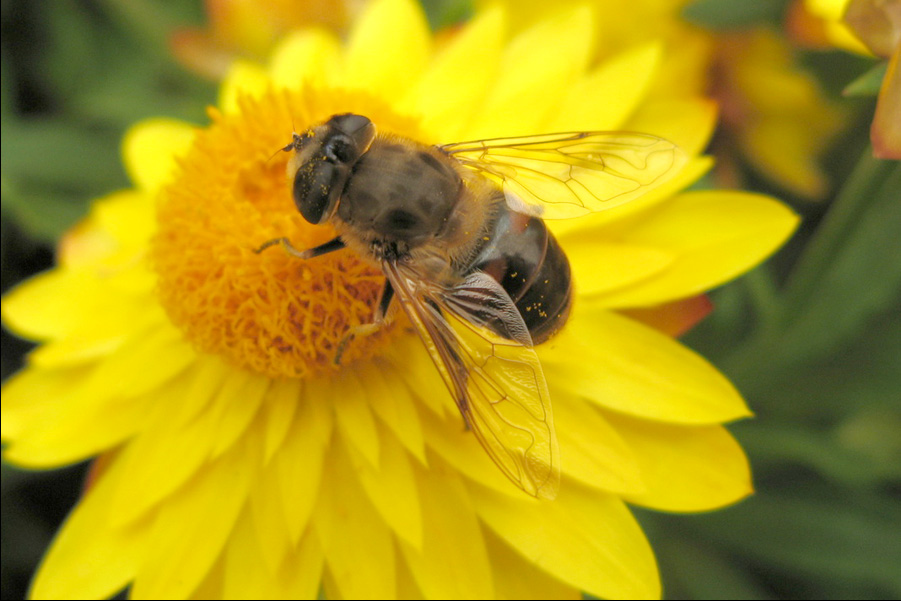
Honey bees are important pollinators in our garden. While foraging for nectar and pollen they also distribute pollen from one flower to another. By doing this they make sure that our plants get fertilised and can set fruit.
To attract honey bees to our garden we offer them a variety of flowering plants, that we plant as companions between our crops.
Honey bees live as a social group, they build bee hives. In the garden we usually see the female worker bees. They are about 3 cm long, brown with a striped back. The breast is usually slightly hairy. They have transparent wings. On their back legs they have little bags in which they carry collected pollen.
Honey bees are usually fairly timid they usually ignore humans. Move slowly if they are around, never try to hit bees!
Honey bees can sting if they feel threatened. The stinger gets stuck in the human skin and keeps up pumping venom into the body for a while. The bee dies after stinging a human. Remove the stinger quickly in order to limit further venom entering the body. A bee sting is painful but usually not dangerous, it leads to local redness, pain and swelling. Cooling the affected area should give relief. Seek professional medical help if signs of allergic reactions are present or the stung person has a history of allergic reactions to bee stings. Also seek medical help if the sting is located in the mouth or swelling could block respiration.